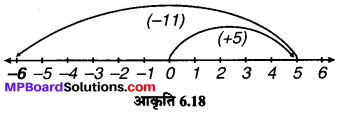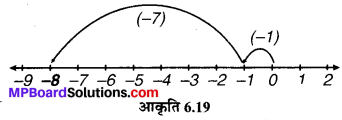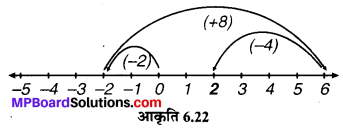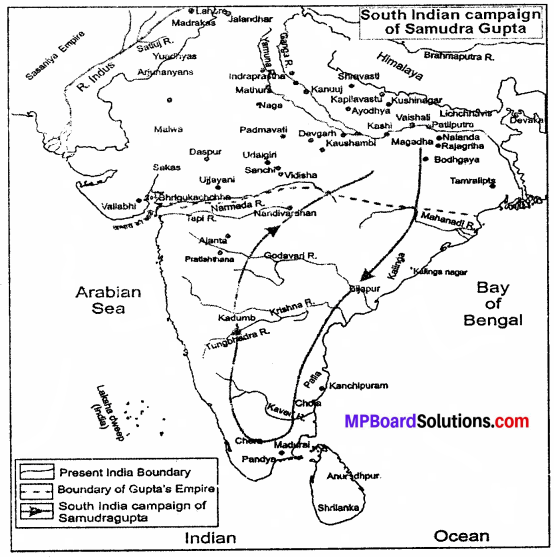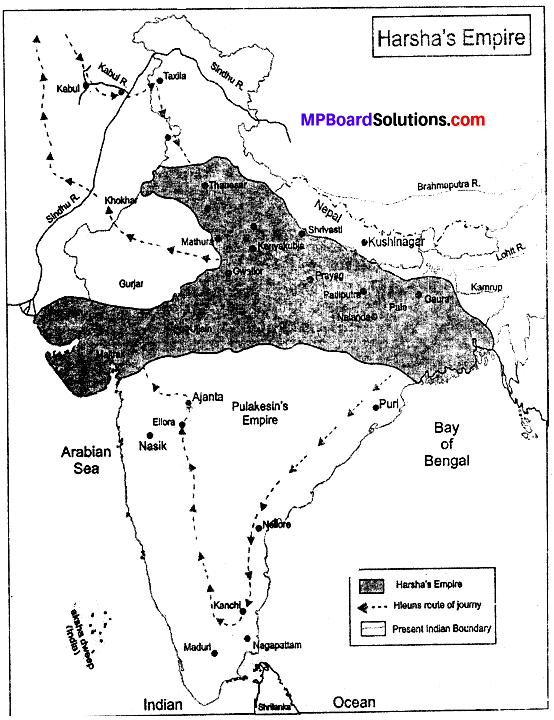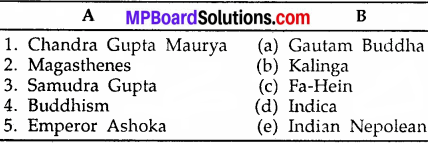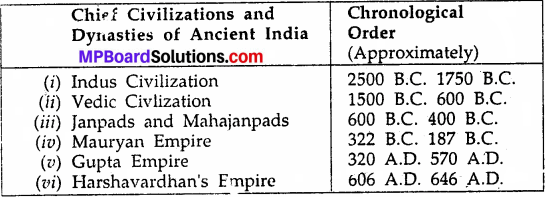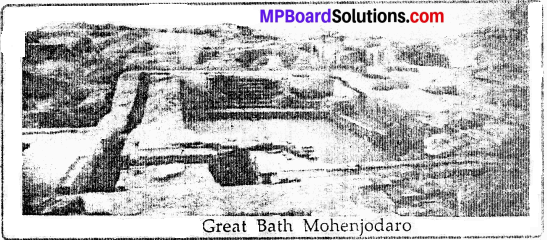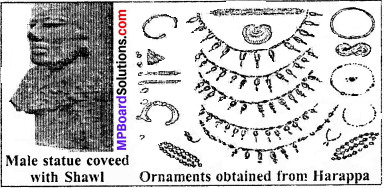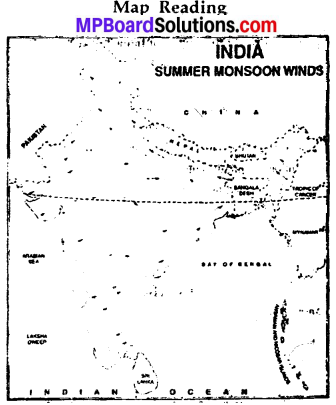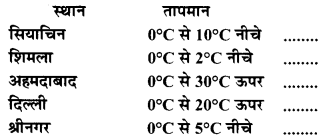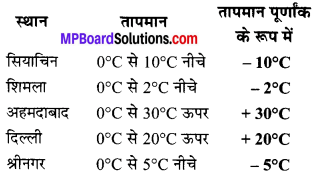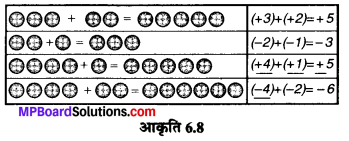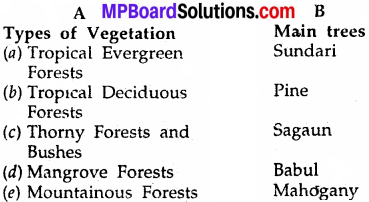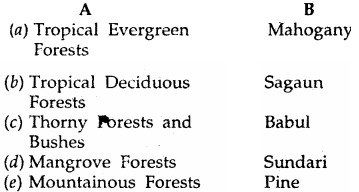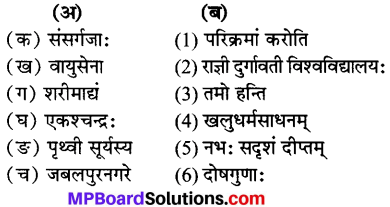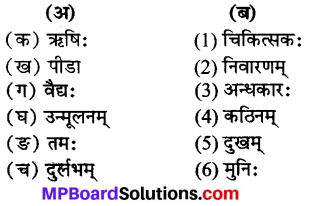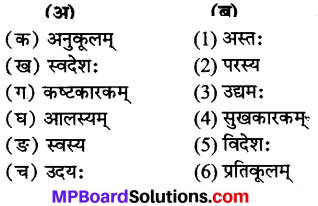MP Board Class 8th Maths Solutions Chapter 12 घातांक और घात Intext Questions
MP Board Class 8th Maths Chapter 12 पाठान्तर्गत प्रश्नोत्तर
पाठ्य-पुस्तक पृष्ठ संख्या # 201
भूमिका
प्रश्न 1.
2-2 किसके बराबर है?
हल:
2-2 = \(\frac { 1 }{ 2^{ 2 } } \) = \(\frac{1}{4}\)
ऋणात्मक घातांकों की घात
प्रश्न 1.
10-10 किसके बराबर है?
हल:
∴ a-m = \(\frac { 1 }{ a^{ m } } \)
10-10 = \(\frac { 1 }{ 10^{ 10 } } \)
पाठ्य-पुस्तक पृष्ठ संख्या # 202
प्रयास कीजिए (क्रमांक 12.1)
![]()
प्रश्न 1.
गुणात्मक प्रतिलोम लिखिए –
- 2-4
- 10-5
- 7-2
- 5-3
- 10-100
हल:
- 2-4 का गुणात्मक प्रतिलोम = 24
- 10-5 का गुणात्मक प्रतिलोम = 105
- 7-2 का गुणात्मक प्रतिलोम = 72
- 5-3 का गुणात्मक प्रतिलोम = 53
- 10-100 का गुणात्मक प्रतिलोम = 10100
प्रयास कीजिए (क्रमांक 12.2)
प्रश्न 1.
घातांकों का उपयोग करते हुए निम्न को विस्तारित रूप में लिखिए –
- 1025.63
- 1256.249
हल:
1. 1025.63 = 1 x 1000 + 2 x 10 + 5 x 1 + \(\frac{6}{10}\) + \(\frac{3}{100}\)
= 1 x 103 + 2 x 101 + 5 x 100 + 6 x 10-1 + 3 x 10-2
2. 1256.249 = 1 x 1000 + 2 x 100 + 5 x 10 + 6 x 1 + \(\frac{2}{10}\) + \(\frac{4}{100}\) + \(\frac{9}{1000}\)
= 1 x 103 + 2 x 102 + 5 x 101 + 6 x 100 + 2 x 10-1 + 4 x 10-2 + 9 x 10-3
![]()
पाठ्य-पुस्तक पृष्ठ संख्या # 203
प्रयास कीजिए (क्रमांक 12.3)
प्रश्न 1.
घातांक रूप से सरल कीजिए और लिखिए –
- (-2)-3 x (-2)-4
- p3 x p-10
- 32 x 3-5 x 36
हल:
1. (-2)-3 x (-2)-4 = (-2) (-3) + (-4) = (-2)-7
(∵ am x an = am + 1)

2. p3 x p-10 = p3-10 = p-7 = \(\frac { 1 }{ p^{ 7 } } \)
3. 32 x 3-5 x 36 = 32-5+6 = 33





